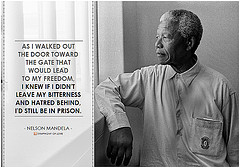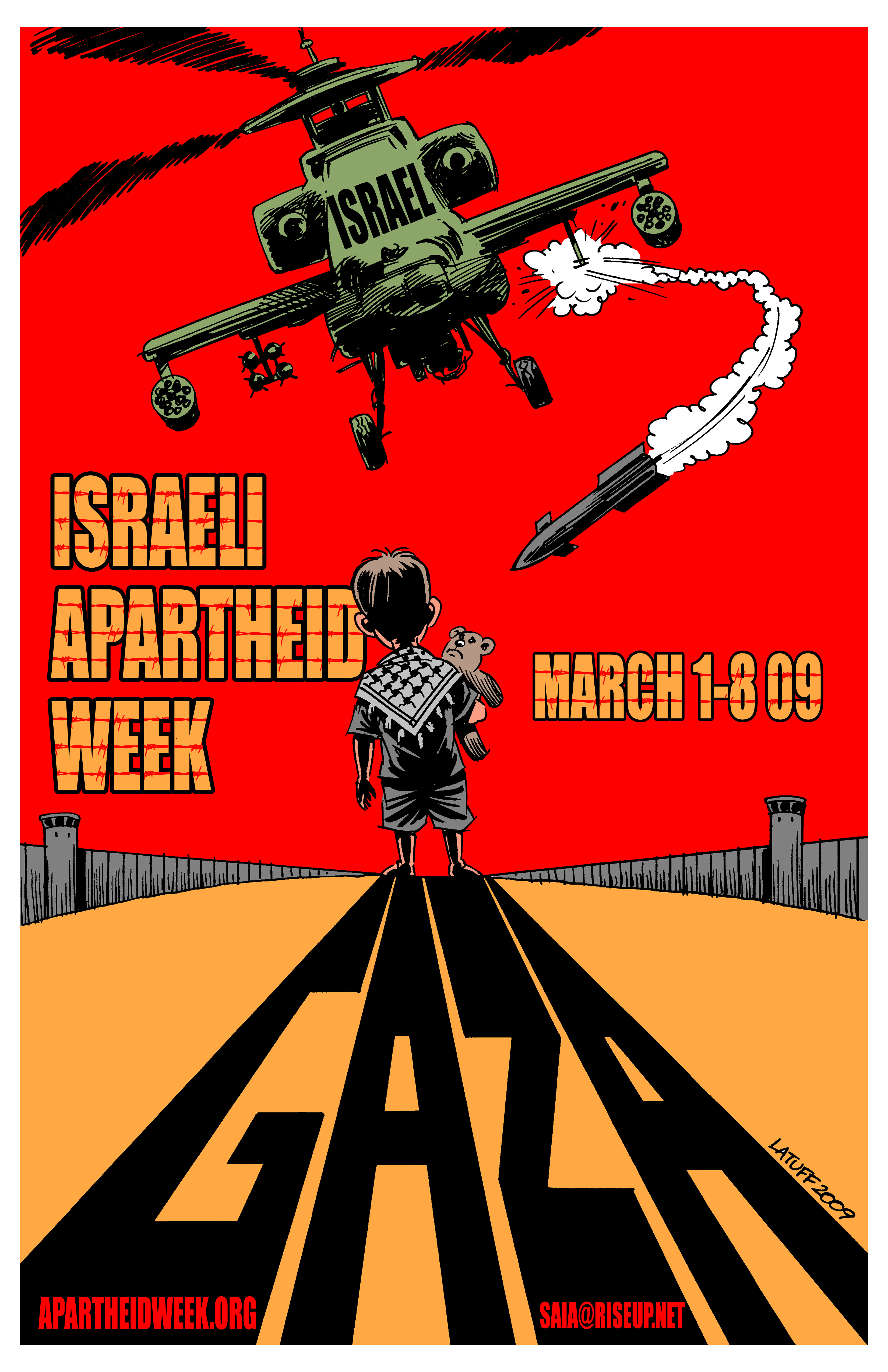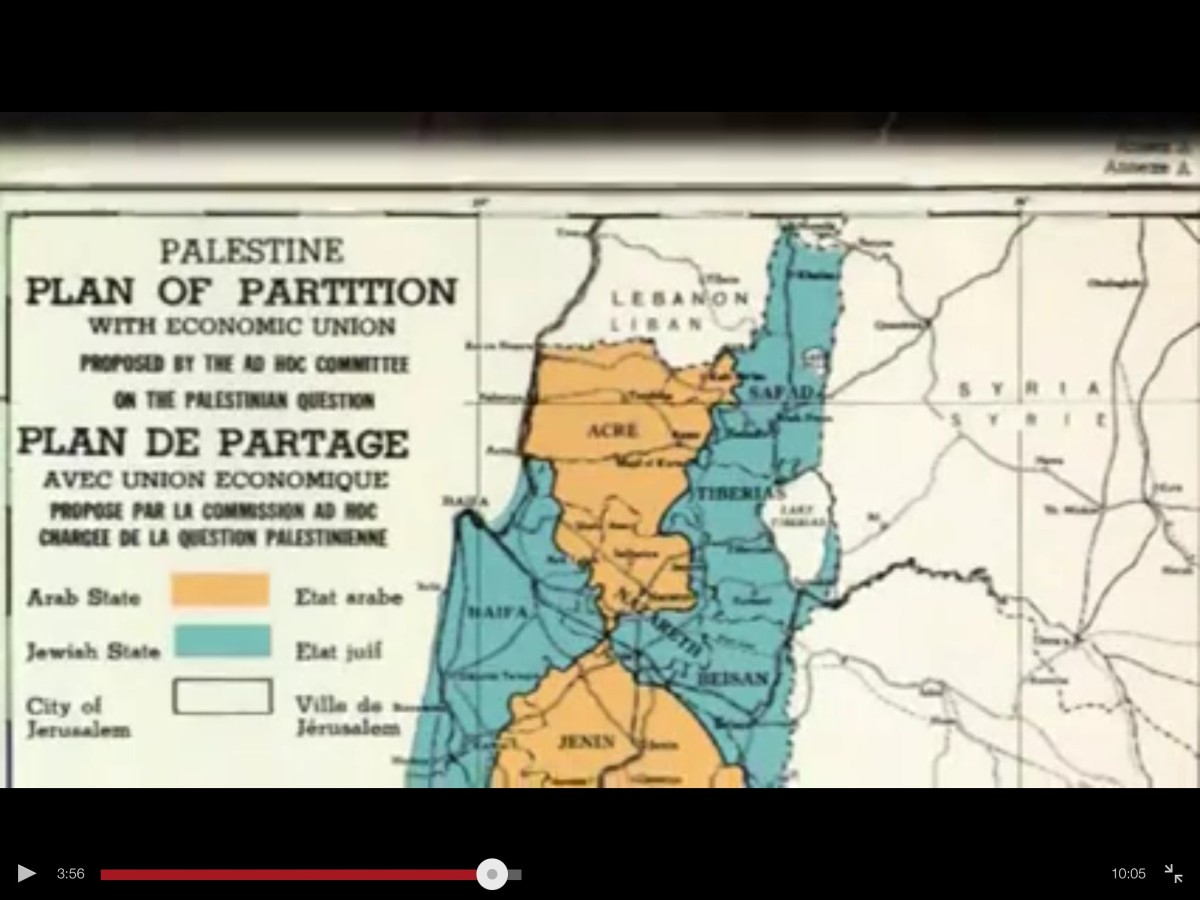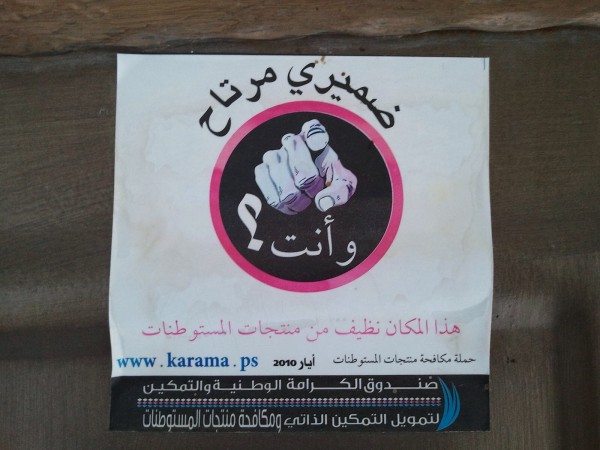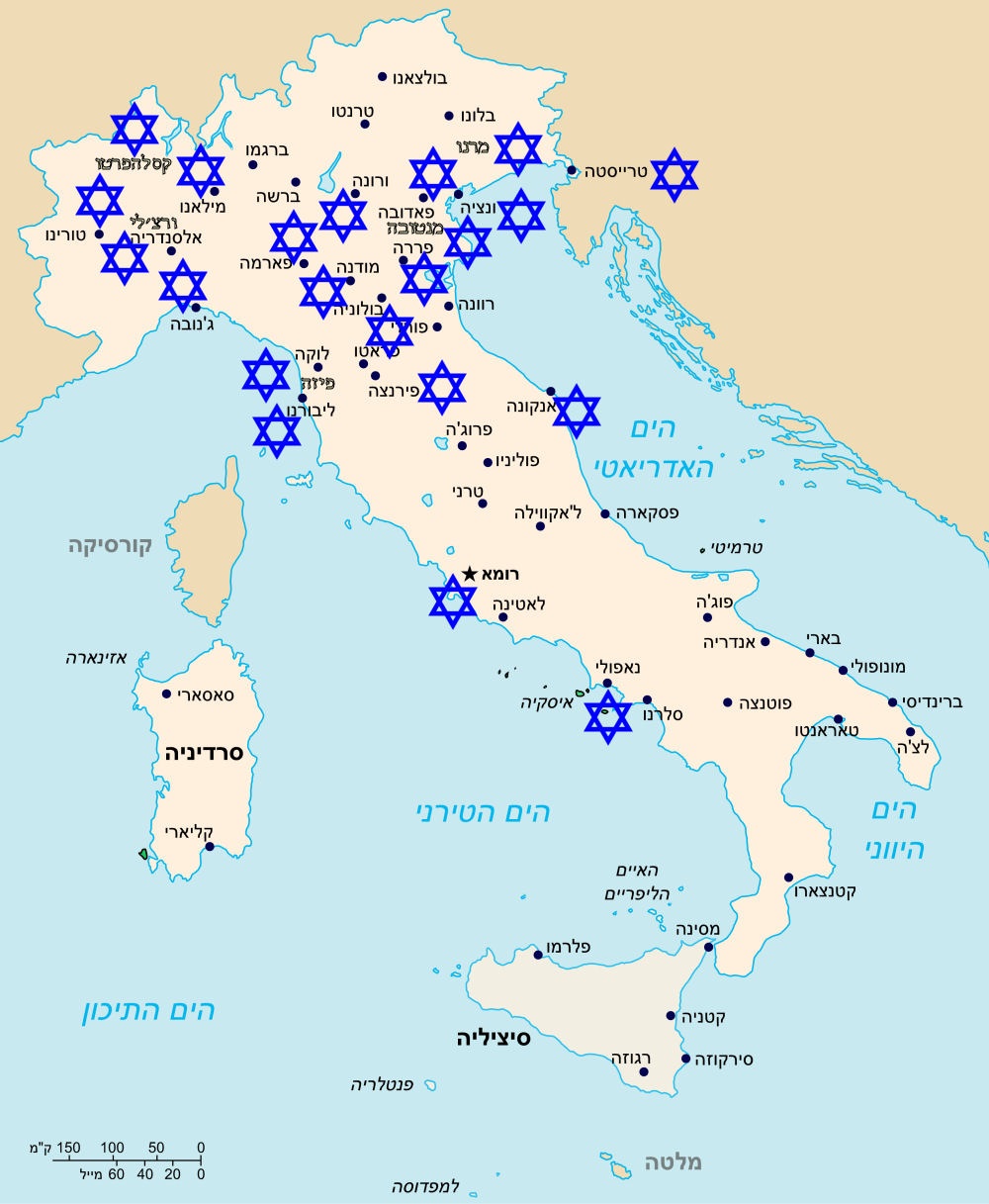 The Case of Italy,
The Case of Italy,
an intervention by John Champagne
~
In several recent essays and articles on the relationship between Italian Jews in the diaspora and contemporary Israeli political and military actions toward the Palestinians, an interesting series of contradictions emerge. In some instances, critique of the military policies of the state of Israel is equated with antisemitism, even when that critique is proffered by Italian Jews. The argument, presented, for example, by Ugo Volli in his “Zionism: a Word that not Everyone Understands,” is that there is a connection between military and political attacks on Israel and what he terms a worldwide and constant economic and cultural campaign of de-legitimation and demonization of that state.1 Volli further contends that these two are directed not simply at Israelis, but at all Jews. “For this reason,” writes Volli, “there is no fundamental distinction between antizionism and antisemitism, between hate for Israel and for the Jews. All of this is well noted and not worth explaining here in greater detail.”2 This position dates from at least July of 1982, when, in response to critiques of the Israeli invasion of Lebanon voiced by Italian Jews in the diaspora, Jewish journalist Rosellina Balbi published in La Repubblica “Davide, discolpati!” an article defending Israel’s actions as defensive rather than offensive.3 In this article, Balbi equated antizionism with antisemitism by noting that any critique of the state of Israel has punctually provoked across Europe “tremors of anti-semitism.” Just a few months later, Italian war correspondent Oriana Fallaci suggested to an audience at Harvard that no one in the US will speak out against Israel because of “the contemporary fear of being blackmailed with the accusation of hating the Jews.”4
A professor of Semiotics at the Università degli Studi di Torino and self-described political activist, Volli is also a journalist who has written for major Italian dailies as well as informazionecoretta.com, an Italian website whose stated goal is to guarantee that the public receives correct information on Israel.5 Antisemitism is a frequent theme in Volli’s work. Most recently, for example, he has argued that “history shows that antisemitism generates hatred of Israel, and not the inverse.”6 Such a position leads Volli to conclude that “the European Left” is antisemitic, as is “almost a third of the population” in Croatia, Belgium, and Spain.7
Volli’s “Zionism” appeared in Shalom, the official monthly magazine of information and culture of the Comunità Ebraica di Roma.8 But who is the audience to which his article is directed? The word Comunità (with a capital C) is perhaps best translated as “Congregation.” It has a structure and a constitution.9 As the statutes of the Union of the Jewish Italian Communities (of which the Roman Comunità is a member) explain, in order to fully avail one’s-self of the resources of the Comunità, one must be an official member.10 The process is formalized via a declaration of one’s Jewishness.11 This declaration can be challenged, in which case, one can file an appeal.12 Under the advice of the rabbi, the consiglio or parliament – a body of twenty eight representatives elected directly by the members of the Comunità every four years – has the final say.13 Specific processes are also outlined for formally leaving the Comunità.14
The history of the structure of the Italian Jewish Communities is a complex one. It encompasses a great span of time, including both Renaissance ghetto life, wherein Jews practicing different “rites” – not only the familiar Sephardic and Ashkenazi, but also the Italian, Sicilian, Levantine, and Catalan rites– were required to worship in a single synagogue. Another significant moment was Fascism, when all forms of religious worship were legally organized and regulated as part of the overall fascicization of Italian society.15 Royal Decree n.1731 of October 30, 1930, created the Union of Italian-Jewish Communities (Unione delle Comunità Israelitiche Italiane,) which represented Italian Judaism in its relations with the state.16
The term “comunità,” however, can also refer to the English “community.” When one speaks of the Jewish “comunità,” therefore, one might be using the term in this looser sense. This might include, for example, non-religious Italian Jews, or out of town Jews attending the synagogue or other events presented by the Comunità’s museum and archive, or someone like Natalia Ginzburg – who, although ultimately converting to Catholicism, understood her Judaism as what one writer has called a “moral identity” – or even atheist Jews like the scientist Rita Levi-Montalcini.17 And while the Comunità is officially Orthodox, not all of its members keep kosher, for example, or wear the yarmulke outside of Temple.
Writing in Shalom, Volli would appear to be addressing an audience composed of both the Comunità and the community, as well as non Jews. Many of the latter have contact with the Comunità via its museum in particular, which anticipates audiences from all over the world. Wall text and brochures, for example, are in Italian, Hebrew, and English, and both English and Italian tours of the two synagogues housed in the museum are provided daily. The tour guides inform the museum goers about the existence of Shalom, and copies of the magazine are available free.
Noting in passing that, on the left, there are “numerous noted intellectuals of Jewish origin actively marshaled against the existence of Israel, from [Noam] Chomski to [Ilan] Pappé to Judith Butler,” as well as less aggressive (and, according to the author, therefore more insidious) organizations like J Street and its European counterpart, J Call, Volli ends his article by calling for a continuing defense of Zionism. He particularly cites for approbation critiques of Israel appearing recently in the official organs of the Italian Jewish press. In Volli’s eyes, to be Jewish is – or should be – to support the state of Israel. (While Volli claims only to be speaking against those who seek the dismantling of the state, in attacking J Street, an organization that explicitly calls for a two-state solution, he tips his hand.)
However, the assumption that all Italian Jews are somehow representative of the state of Israel – a conclusion that would seem to follow logically from Volli’s argument – is also labeled antisemitism by other Jewish intellectuals working in the Italian academy today. For example, Marianna Scherini, doctor of research in Anthropology, History and Theory of Culture at the Università di Siena, begins her argument that, in their coverage of the 1982 war, both the Italian leftist press and the Italian daily newspapers offered converging, critical analyses of Israel, with a discussion of a new (post-war) antisemitism that is specifically anti-Israeli in its content.18 Due to the aforementioned war in Lebanon and the accompanying massacre of Palestinians in the refuge camps of Sabra and Shatila, 1982 was a particularly painful moment for the Italian Jewish community. Perpetrated by Christian Phalangists assisted by the Israel military, the massacre was publicly critiqued by some Italian Jewish intellectuals – most notably, Primo Levi – and followed in Rome by the bombing by terrorists of the Great Synagogue. (In fact, even prior to the massacre, the invasion had been condemned by Levi and several other intellectuals, including Franco Belgrado, Edith Bruck, Ugo Caffaz, Miriam Cohen, Natalia Ginzburg, David Meghnagi, and Luca Levi.)19
The synagogue bombing resulted in the death of a child, Stefano Gay Tache. The killing took place on the holiday of of Shemini (also spelled Shmini) Atzeret (also spelled Azzeret), which the English version of the catalog of the Jewish Museum of Rome states is “a day when children receiving [sic] a public blessing.”20 Since the bombing, the Great Synagogue can only be visited via guided tours led by volunteers, who typically reference the attack. A B’nai B’rith Europe webpage repeats the claim that the attack took place when “a service of blessing for children was being held,” though it suggests that this attack “was perpetrated opposite the Grand Synagogue in Rome.”21 In fact, the blessing referenced occurs not on Shemini Atzeret but rather on the next day, Simchat Torah. In Israel, however, these holidays are celebrated on the same day. Regardless of this discrepancy, 1982 is sometimes cited as marking a definitive split between Italian Jews and the Italian left.22
Scherini concludes her essay by arguing that both the Italian leftist press and the dailies tended to isolate Israeli actions from their political and historical context23 and to show no interest in the specific politics of the Palestinians,24 as well as to equate Israeli actions in Lebanon with the Shoah and suggest a transformation of Israeli Jews from victims to perpetrators of a contemporary persecution of the Palestinian people (196).25 She then explicitly links contemporary, post-war antisemitism with her contention that, “in the period under examination [1982] Israel constitutes a virtual ‘Jewish collective’ in the imagination of the Italian daily press.”26 According to the author, the treating of Israel as “the mirror through which to observe Italian Jews, and vice versa” and corollary homogenizing of all Jews is an instance of antisemitism.27
A third position: some Italian Jewish intellectuals draw a relationship between contemporary antisemitism and the position, espoused by some Western intellectuals, that Israel represents the logical outcome, taken to its furthest point, of Western imperial expansion. This connection is suggested briefly by historian Guri Schwarz, who was a 2013-2014 Viterbi Visiting Professor at UCLA’s Center for Jewish Studies. Schwarz’s contention is that, in labeling Israel a kind of “worst case scenario,” Western antisemitism arises from a fear of the proximity of the self to the Other, a rejection of the Other in the self.28 That is, antisemitism arises from the fear that Jews are too similar to “the rest of us.” Schwarz’s argument unfortunately de-historicizes the trope, which appears to have arisen in the wake of the ’67 war . It found its condition of possibility in the linking of this war to then contemporary US imperial expansion in southeast Asia, as noted in Andrea Becherucci’s analysis of the coverage of the ’67 war in three left-wing Italian journals (119).29
Beyond the fact that all three of these positions seem to foreclose, to varying degrees, any critique whatsoever of the military policies of the state of Israel, they also circumvent any discussion of the historical contradictions of a secular religious state. Clearly, the idea of a Jewish state is a product of the nineteenth century. It is historically linked to the “importation” to Europe, from the US and Latin America, of the model of the Enlightenment (secular) nation-state and overdetermined by (post-war) Cold War Western interests. This refusal to historicize Israel results in the particular double-bind that Israel on the one has the right to act as all other states – that is, to take both defensive and offensive action against perceived threats; this was the very argument debated in the diasporic community in 1982, with the invasion of Lebanon, perceived by some as Israel’s first offensive war30 – and that Israel is a “special case” – i.e., a state that, owing to the historical circumstances of its founding, is not subject to international law and the dictates of the UN, for example.
As for the tension between the religious and the secular, an emblematic example is the insistence by some Italian Jews that the Jewish presence in Italy dates from 161BCE because the first book of Maccabees says so. (It may in fact date from earlier, as the Tunisian Jewish community dates itself, at least anecdotally, to the first diaspora, for example.) This in turn raises the question of how one writes the history of what is understood to be eternal – a problem that leads some scholars to argue that Jewish historiography finds its conditions of possibility in the Haskalah, nineteenth century Jewish Enlightenment (Yerushalmi). In Italy, the problem of how to write Jewish history is further complicated by the fact that the reform movement only recently came to Italy, and so the Roman Comunità is “officially” Orthodox.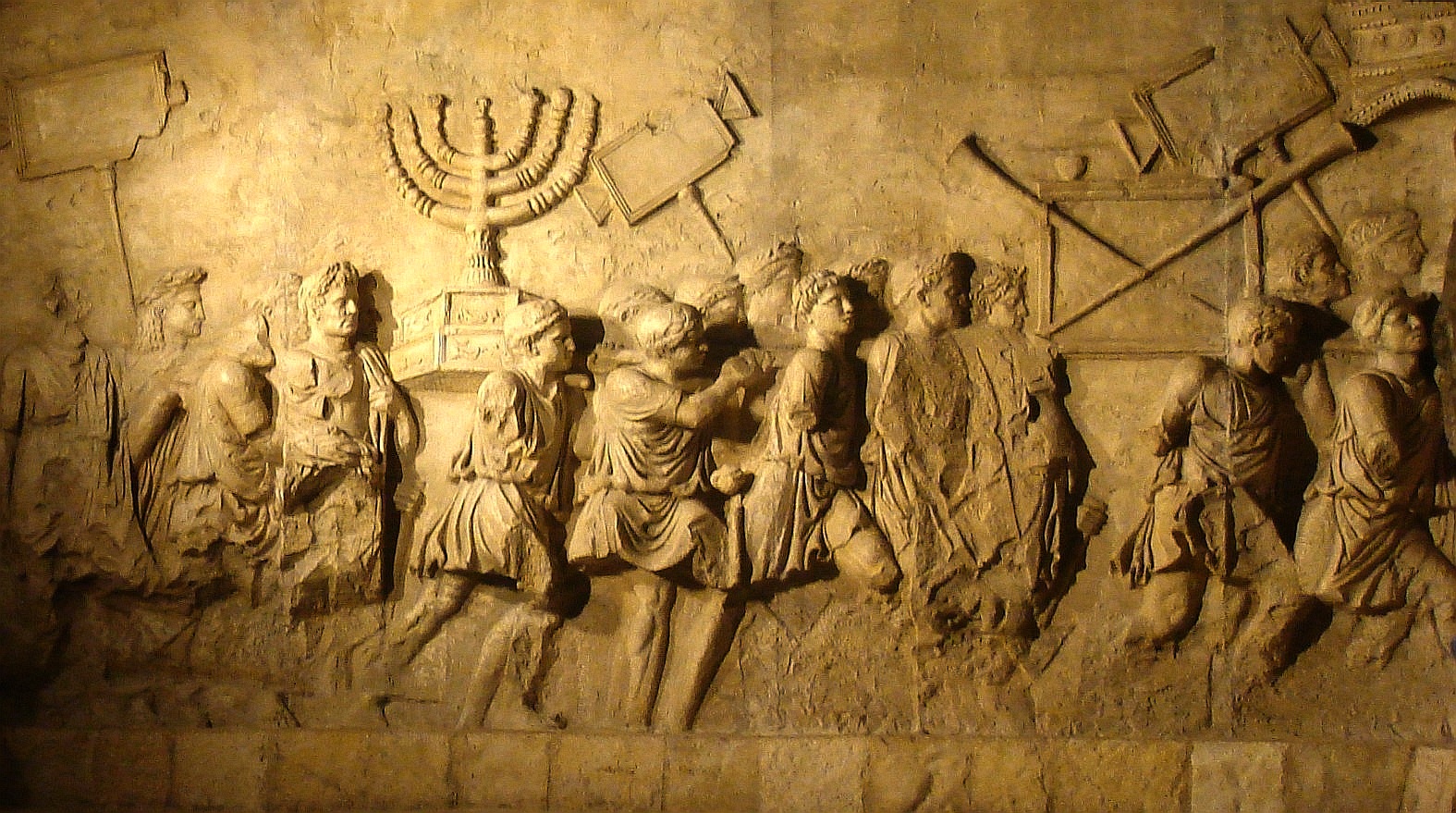 31 This means that, in the Jewish Museum of Rome’s presentation of the history of the Jews, Biblical events for which there is little archaeological evidence are intermixed with such historically verifiable events as the destruction of the second Temple, commemorated in the Roman forum’s Arch of Titus.
31 This means that, in the Jewish Museum of Rome’s presentation of the history of the Jews, Biblical events for which there is little archaeological evidence are intermixed with such historically verifiable events as the destruction of the second Temple, commemorated in the Roman forum’s Arch of Titus.
In drawing attention to the irresolvable tensions between the religious and the secular that necessarily inform the idea of a Jewish state, I am not suggesting, as Schwarz fears its antisemitic critics do, that Israel is “any worse” than the US in regard to ignoring the UN, for example. In fact, we know well that by virtue of its (declining) world hegemony, the US often chastises other states for breaking international law while itself flouting that law. I am suggesting, however, that, while no one would in all likelihood accuse US intellectuals who critique US foreign policy of being, say “racist,” the creation of a Jewish state has historically insured that any critique of that state will be equated in some quarters with antisemitism, even a critique produced by Jews, and that there seems to be a kind of willed refusal of some Italian Jewish intellectuals to work through this contradiction – a contradiction that finds one of its conditions of possibility in the modern “racialization” of Judaism that occurs via Nazi and Fascist antisemitism and its links to eugenics. Both Italian Fascism and Nazism deployed this antisemitism in an effort to invent national subjects, the Jew being the Other against which both Italian and German identities hoped to consolidate themselves and ward off their precarious histories.
As its corollary, scholars who maintain that antizionism equals antisemitism must treat the latter itself as ahistorical – that is, as if there is no significant difference between pre-modern and modern forms of antisemitism. Rather than understand Italian Zionism as a kind of Foucauldian counter-discourse made possible by nineteenth century antisemitism and the antisemitic policies of Mussolini’s regime so well documented by Michele Sarfatti, Italian Jews who support unwaveringly the military policies of Israel today must construct their Comunità as always already Zionist.32 This, despite the fact that it is well known that many Jews who participated in the early years of post-Unification Italy were critical of Zionism and that, “before the Racial Laws of 1938, Italian Zionism was essentially the fruit of actions by a group of rabbis.”33
A further corollary is that the term anti-zionism can refer both to a critique of the policies of the state of Israel and calls for its dismantling or even destruction. Volli himself argues that even at least one of those Italian Jewish authors he chastises admit (Volli’s word) that “for the great majority of Italian Jews, Israel remains an ideal and a patrimony to defend.” Interestingly, Volli uses patrimonio and not, for example stato,the former having connotations of both monetary and, more typically in Italian cultural discourse, connotations related to artistry, history, and heritage.
Meanwhile, according to its own discourse about itself, at least as presented by its institutions such as the Jewish Museum of Rome, the cause of the shrinking of the Italian Jewish community is attributed not to any discontent with the Comunità’s refusal to critique Israeli military policies (and its insistent presentation of itself to the larger public as always having been supportive of Zionism) nor the lack in Rome of a thriving Italian Jewish reform movement but rather to mixed marriages. What the events of 1982 have produced is apparently an unhealable rift between the Italian left and the official representatives of the Italian Jewish Comunità.
The problem of who exactly is an Italian Jew is further exacerbated by the fact that Italian Jews have lived their identities in ways far more complex than either of the crude terms “assimilation” or its opposite – autonomy? non-incorporation? – can signify. As long ago as 1985, Primo Levi “defended” himself from the charge, made in the US magazine Commentary, that he was assimilated, with the simple rejoinder, “I am. There does not exist in the Diaspora Jews who are not, to greater or lesser degrees: if only for the fact of speaking the language in which they live. I claim, for myself and for everyone, the right to choose the level of assimilation that is best suited to their culture and their surroundings.”34
So, while, clearly, Italian Jews – both those who are official members of the Comunità and those who live their Judaism in a variety of different ways – hold varying opinions on the current military policies of the state of Israel, it is next to impossible to produce a critique of the state of Israel as a state without calling up the specter of antisemitism. That is, once a state is defined by Judaism, antisemitism is the necessary and irreducible outcome of any critique of Israel. As long as a critique of the very idea of the nation-state is part and parcel of leftist politics, and Israel continues to define itself as the (and not even a) Jewish state, critique of Israel will equal antisemitism, as least as it is defined by the aforementioned Italian Jewish intellectuals. These historical conditions create a particularly painful situation for those Italian Jews on the left, as they may feel as if they have no place in any Italian Jewish Comunità.
Furthermore, once a Jewish state has been created in the lands formerly also inhabited by Palestinians, the only possible logical corollary is the formation of a Palestinian state. This, again, is irreducible; the logical outcome of the Palestinian diaspora is a Palestinian state. Thus the contradictory position of a global left that on the one hand engages in a critique of statehood and on the other argues for a Palestinian state. This is not hypocrisy or bad faith; it is a position overdetermined by history.
These historical contradictions make it extremely difficult even to write of the relationship between Italian Jewry, Israel, and Zionism, and the historiographical problems of locating a post-war Jewish resistance to Zionism are substantial, since the keeper of the official records is the Comunità (which has an archive). Yet another problem bequeathed by Italian history: prior to the Shoah, Zionism was understood by many Italian Jews to be equivalent not to a call for Jewish statehood but rather philanthropic support for poor Jews in the Levant; even in the post-war years, the number of Italian Jews who immigrated to Israel was relatively minimal. Volli’s argument that Zionism is a word that not everyone understands is exactly (and not just figuratively) correct; for history has rendered it undecidable. The only way “out,” even provisionally, of this impasse, is further work on the history of Italian Judaism, and by parties who work scrupulously to make their interests as visible as they can. Unfortunately, an initial review of the debates in Italian Judaism around the events of 1982 reveals how little progress has been made on the issue of the rights of the Palestinian to self-determination – a phrase used by Levi and his co-signers in their response to the invasion of Lebanon.
As Robert Esposito suggests, part of the problem with the term “community” is that it is almost always imagined as something that is possessed in common, something that can therefore be “lost” and re-found.35 Using an etymological approach, Esposito instead argues for a focus on the munus in community:
the munus is the obligation that is contracted with respect to the other and that invites a suitable release from the obligation. The gratitude that demands new donations [italics in the original]. . . . It doesn’t by any means imply the stability of a possession and even less the acquisitive dynamic of something earned, but loss, subtraction, transfer.36
Loss, subtraction, transfer – these are terms that have a very specific historical resonance to both Jews and Palestinians in the diaspora.37 While Israel’s current leaders are engaged in an extended grabbing of land – and, without a trace of irony, some members of the diasporic Libyan Jewish community in Rome protest that they have never been compensated for the land they were forced by Gaddafi to leave behind – Jewish memory keeps alive a tradition of hospitality to the stranger. Whether or not that tradition can survive the violence of nationalism is yet to be determined.
_____
John Champagne‘s research is in the area of Comparative Cultural Studies, with a focus on the representation of Gender and Sexuality in modernist film and literature. He currently teaches at Penn State Erie, the Behrend College, and as a Fulbright recipient, he spent the 2006–07 school year teaching American Studies in Tunisia at the University of La Manouba. He is the author of four books, including Aesthetic Modernism and Masculinity in Fascist Italy (London and NY: Routledge, 2013).
_____
notes:
1. Volli, “Sionism: una parola che non tutti capiscono,” Shalom, June 2013: 18. Unless otherwise indicated, all translations are mine.
Back to the essay
2. Ibid
Back to the essay
3. Rosellina Balbi, “Davide, discolpati!” La Repubblica 7.135 (July 6, 1982): 20.
Back to the essay
4. Oriana Fallaci, “Scuola di politica,” Il mio cuore è più stanco della mia voce (Milano: Rizzoli, 2013), 82. Fallaci’s remarks were made at a conference at the Harvard Institute of Politics entitled “Politics and War” on September 23, 1982 – one week after the massacre of Sabra and Shatila, to which she referred in her talk several times. Earlier that year, Fallaci had traveled to Beirut to interview then Colonel Ariel Sharon. The interview was published in the September 6, 1982 issue of L’Europeo.
Back to the essay
5. “Chi siamo,” informazionecoretta.com, accessed May 19, 2014, http://www.informazionecorretta.com/main.php?sez=130.
Back to the essay
6. Ugo Volli, “Il potenziale del genocidio 19/05/2014,” informazionecoretta.com, accessed May 19, 2014, http://www.informazionecorretta.com/main.php?mediaId=&sez=280&id=53466
Back to the essay
7. Ibid. Volli is drawing his conclusions from the results of a global test of antisemitism developed by the Anti-Defamation League. On this test, see “About the Survey,” ADL Global 100, accessed May 19, 2014, http://global100.adl.org/about
Back to the essay
8. For the magazine’s website, see Shalom, Mensile Ebraico di Informazione e Cultura, accessed May 20, 2014. http://www.shalom.it
Back to the essay
9. “Consiglio della Communità Ebraica di Roma,” March 31, 1993, http://www.romaebraica.it/wp-content/uploads/2010/07/Regolamento-CER.pdf
Back to the essay
10. Art. 2.2, “Iscrizione alla Comunità,” Statuto dell’ Unione delle Comunità Ebraiche Italiane, accessed May 20, 2014, http://www.romaebraica.it/wp-content/uploads/2010/07/Statuto-UCEI1.pdf
Back to the essay
11. “formalizzata con esplicita dichiarazione o deriva da atti concludenti.” See Art.2.1, “Iscrizione.”
Back to the essay
12. Art.2.3, “Iscrizione.”
Back to the essay
13. On the structure of the Comunità, see “La C.E.R.” Comunità Ebraica di Roma, accessed May 20, 2014, http://www.romaebraica.it/cer-comunita-ebraica-roma/
Back to the essay
14. Art. 2.4, “Iscrizione.”
Back to the essay
15. “Italian” refers to those Jews who have historically inhabited the Italian peninsula since antiquity; a synagogue has been discovered, for example, at Ostia, Antica, thought to date from the reign of Claudius. On the synagogue, see Lee I. Levine, The Ancient Synagogue, The First Thousand Years (New Haven: Yale University Press, 2000.
Back to the essay
16. Guri Schwarz, After Mussolini, Jewish Life and Jewish Memories in Post-Fascist Italy, trans. Giovanni Noor Mazhar (London Vallentine Mitchell, 2012), 21. The association survived the postwar period, lasting until 1987; ibid., 22. Its name was changed to the present Unione delle Comunità Ebraiche Italiane in 1989.
Back to the essay
17. On Ginzburg, see Nadia Castronuovo, Natalia Ginzburg, Jewishness as Moral Identity (Leicester: Troubador, 2010).
Back to the essay
18. Marianna Scherini, “L’imagine di Israele nella stampa quotidiana Italiana: la guerra del Libano (septembre 1982), ” “Roma e Gerusalemme,” Israele nella vita politica e culturale italiana, Marcell Simoni e Arutro Marzano, eds, (Genova: ECIG, 2010), 177-99.
Back to the essay
19. Franco Belgrado, Edith Bruck, Ugo Caffaz, Miriam Cohen, Natalia Ginzburg, Primo Levi, David Meghnagi, and Luca Zevi, “Perché Israele si ritiri,” La Repubblica 7.123 (June 16, 1982): 10. The letter argued, “The destiny of the Israelian democracy rests in fact inseparably tied to the prospect of peace with the Palestinian people and reciprocal recognition.” Also, contra Volli, the letter fears that the invasion will in fact give rise to “a new antisemitism.”
Back to the essay
20. Di Castro, Daniela, Treasures of the Jewish Museum of Rome, (Rome: Araldo De Luca, 2010.), 19.
Back to the essay
21. B’nai B’rith Europe, “The Stefano Gay Tache Lodge in Rome,” accessed April 20, 2014, .
Back to the essay
22. Matteo Di Figlia, Israele e la Sinistra (Roma: Donzelli 2012) 121.
Back to the essay
23. Scherini, “L’imagine,” 195.
Back to the essay
24. Ibid., 195-96. Contra Scherini, both Levi and Fallaci were critical of Yasar Arafat, for example. See Primo Levi, “Chi ha coraggio a Gerusalemme?” Opere, 1171-72, reprinted from La Stampa, 24 June 1982, and Fallaci, “Scuola,” 78.
Back to the essay
25. Scherini, “L’imagine,” 196.
Back to the essay
26. Ibid., 197.
Back to the essay
27. Ibid.
Back to the essay
28. See the concluding chapter of Schwarz, After Mussolini.
Back to the essay
29. Andrea Becherucci, “Vicere la guerra e perdere la pace. Israele e la guerra dei Sei Giorni in tre riviste della sinistra Italiana: “Il Ponte,” “L’Astrolabio,” e “Rinascita,” “Roma e Gerusalemme,” Israele, 119.
Back to the essay
30. In the wake of years of international protest against the US war in Vietnam, Balbi disingenuously asked, in July of 1982, “Why is it only Israel that is judged by criteria not applied to other States? Why this visceral prejudice?” Balbi, “Davide,” 20. While the war in Vietnam might have been far from Balbi’s memory, this was not the case for some of her fellow Italians who analogized the invasion of Lebanon to Vietnam; see, for example, Fallaci, “Scuola,” 73, in which the writer compared the bombing of Lebanon (which occurred prior to the massacre at Sabra and Shatila) to Vietnam and Hué.
Back to the essay
31. Associated with The World Union for Progressive Judaism, reform congregations currently exist in Florence and Milan (where there are two). For links to the websites of these communities, see “The World Union for Progressive Judaism, Worldwide Congregations, Europe,” accessed May 19, 2014, http://wupj.org/Congregations/Europe.asp. Lev Chadash of Milan, the first reform congregation, dates from 2001. http://lnx.levchadash.info/index.php?option=com_content&task=view&id=10&Itemid=13; Volli was for a period of time its president. Rome maintains a Beth Hillel group for Jewish Pluralism.
Back to the essay
32. Michele Sarfatti, The Jews in Mussolini’s Italy: from Equality to Persecution (Madison: University of Wisconsin Press, 2006). On Jewish life during the fascist period, see also Alexander Stille, Benevolence and Betrayal, Five Italian Jewish Families Under Fascism (New York, NY: Picador, 2003).
Back to the essay
33. Dan Segre, “Ebrei Italiani in Israele,” in Identità e Storia degli Ebrei, ed. David Bidussa, Enrica Collettti Pischel, and Rafaella Scardi (Milano: Franco Angelli, 2000): 190.
Back to the essay
34. Primo Levi, “Gli Ebrei Italiani,” in Opere, Vol 2., ed. Marco Belpoliti (Turin: Einaudi, 1997), 1293.
Back to the essay
35. Roberto Esposito, Comunitas, the Origin and Destiny of Community, trans. Timothy Campbell (Stanford: Stanford University Press, 2010). For an excellent, brief introduction to Esposito’s ideas, see Alexander D. Barder, review of Roberto Esposito, Communitas, Philosophy in Review 31, no. 1 (2011): 29-32.
Back to the essay
36. Ibid., 5.
Back to the essay
37. On the 27th of June, 1982, Levi was interviewed by Alberto Stabile of La Repubblica. While resisting the positing of an analogy between Hitler’s “Final Solution” and “the quite violent and quite terrible things that the Israelis are doing today,” Levi nevertheless argued, “A recent Palestinian diaspora exists that has something in common with the diaspora of two thousand years ago.” Cited in Domenica Scarpa and Irene Soave, “A 25 anni della scomparsa, Le vere parole di Levi,” Il Sole 24 Ore, April 8, 2012, http://80.241.231.25/ucei/PDF/2012/2012-04-08/2012040821380709.pdf. The authors, however, get the date of the interview wrong, writing that it occurred on June 28.
Back to the essay
